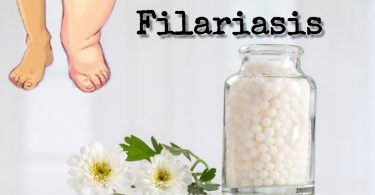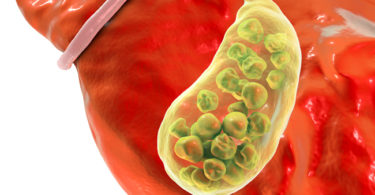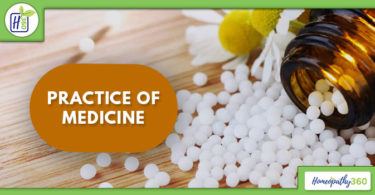ABSTRACT; the nails are continuosly growing structures which reflect many aspects of the body’s function .The anatomy and physiology of the nails is described .Abnormal appearances of the nails are described in terms of general appearances form , color ,structural abnormalities and nail biting , the implications of various appearances of the nails of different digits of prescribing are described
KEYWORDS ; nails anatomy ; appearance homoeopathic prescribing miasm
A very depressed , tired lady came to see me with many white spots on her nails .After one month of liver and uterine drainage with sepia 4c , both the patient and her nails had regained perfectly normal appearance . This case intrigued me , so I decided to photograph the nails of patients to better understand the relationship of this organism
Anatomy and significance of nails
Observation of nails should be part of the complete examination of of a patient .It can rapidly indicate the ddiagnosis
Shake hands with your patients and feel the warmpth , the cold , the calmness and dryness and the personality ask them to show you their hands. With out fail the patient will show their palms , as if to have their fortune told . Turn their hands over to accurately observe the morphology and to test their reaction , then look at each fingernail and toenail
Changes in the finger nails represent the actual pathology of the patient of the patient , where as changes at the level of the toe naoil indicate their heredity .the thumb and the big toe nail indicate their heredity .The humb and the big toe are characterstic of the personality and they often show a specific familial morphology .
The teeth finger nails , the toe nails and the ear and the body hair of the hair of the head and the body , all contain the same elements , that that
Are found in animal horn . The are survive long after death . salt builds them . sulphur nourishes them and mercury destroys them the nail is a living tissue which the neighbouring powers and organism are revealed . the nails are created from a colloidal get the dries a burden as it advances . this is a centrifugal physiological process that slows down during the acute illness . the nail blade develops through keratigation of the epithelial cells of the nail bed precipitates that produce localized depressions in the blade .One may complete the growth to that of a bone .Both starts in a viscous environment and evolve into structures
The nail consists of 3 parts , the first part of the free edge , the root or matrix of the nail ,is hidden by the skin fold at the base of the nail the second part of the body clings to the dermis of the of the third pharynx and rests on the whitish opaline generating stratum of the nail bed , the lunle . And finally the third part of the free edge more or less in the form of a claw and reminds us of its past use as a tool and weapon today replaced by its aesthetic value .The dermis known as nail mantle underlies the nail .like rest of the dermis it possess sudoriferous and sebaceous glands and nerve papillae . The nail constitutes a hard protective surface that maintains a counter pressure giving the digital pulp its sensitivity and finesse , it is an organ of reception and emission towards the sky while the soft parts of the fingers remain in contact with the ground
In early child hood the growth of the nail is very slow 0.08-0.10/day / From the age of 8 years old the growth of the nail accelerates until it reaches a maximum of 0.12-0.14 /day at the age of 30-40 and remains at this rate until about the age of 50 . After menopause and andropause , the growth of the nails slows down , eventually reaches a rate of 0.04-0.06 /day after the age of 60
As a rule men’s nails are more robust and larger than those of the women very rapid growth of the nail suggests hyperthyroidism and thyroidinum 9c may be indicated .All nail troubles can benefit from ,organotherapy particularly hepatine 4c the nutrition of the nail dependent on the nervous and endocrine systems . termination of neve net works are situated in the skin fold at the pont of origin of the nails and correspond meridian points of acupuncture
The energy of the liver , which has a centrifugal movements extends right up to the heart and controls the nails . In liver and heart patients the nail becomes thinner and more fragile and the lung and kidney patients thicker and harder .A nail somatotopic map can be constructed based on the energic data of acupuncture . Local changes in one or more nails can be related to a function of organ
EXAMINATION OF NAILS: general characterstics
The normal rail expresses harmony between the dimensions of the hand and the rest of the body
The form of nails on the rest of the four limbs reveal first the constitutional mosaic .It can be modified in acute affections such as mycosis and chronic conditions a cardio respiratory insufficiency that can be lead to clubbing of the fingers
Certain basic rules can be applied when using the nails to make a diagnois . first let us look at the physical psychic and emotional `aspects of patients ..
A regular and proportional form indicates a functional and mental equilibrium where as un grace full proportion corresponds to organic and psychic instability .A convex orientation is accentuated with centripetal manifestations
FORM: in the carbonic type nails are short and square in the phosphoric long and fine , the nails of the fluoric may display a variety of appearances including long and short or narrow and deformed
Long nails are a form of sensitivity finesse ,reserve and modesty , gentleness and wisdom and also mental dis equilibrium if they are too long , long and almond shaped nails may indicate pulmonary weakness and constitutional hypothyroidism .Short nails signify activity , exuberance and positive out look are very short and broad . Third phalanges that are short and flat have spatulate form are active and have a taste of research . rectangular nails signify a desire for research . rectangular nails signify a reach . narrow nails indicate general fragility . In particular indicate fragility of the spinal column bone weakness and fragile health narrow nails in women are indicative an ovarian insufficiency . in vital young people are full of energy , firm and robust the nails are they become harder as they become as they become older when remedies for slerosis will be needed
In addition to square and rectangular nails many geometric forms are possible , the triangular nails are seen in nervousness , spasmophilia tics and convulsions in those who are mentally retarded or in those who have are those phobias and persecusion and some times in those who suffer from night mares , convexity of the nails indicate a predisposition towards respiratory and cardiac disease as well as asthma
Convexity of the nails can be localized to a single finger , on the thumb it is a true beacon of the mental structures and general intoxication on the index finger it indicates problem with kidney function with a tendency to bronchial elimination on the small finger
The more nails flatten the more signifies a lymphatic diathesis with apprehensive character , lack of initiative and ovarian insufficiency
Olive pit date pit or barely grain shapes are found in leumatic miasm and tuberculino luetics such as silicea . They go together with the colocynthis rhythms of the lymphatic nerve , hypochromic anaemia and with cimicifuga and ignatia , heredity alcoholism may be associated with concave third phalanges and nails like cimicifuga
Thick nails suggest force antimonium crudum , grapphites and silicea produce the thickest nails , after these come alumina , calcarea carbonica , mercurius , sabadilla , sepia and sulphur , hepar sulphur , nitric acid , psorinum , silicea , the main remedies are anatherum , antimonium crudum , arsenicum album , causticum , graphites and silicea , centripetal intoxications can be led to a clw like deformation as in alumina , floric acid and mercurius , natrm muriaticum and aged thuja
Flat and round nails , shaped like a Chinese fan , suggest , remedies of the spleen , like ceanothus
COLOR: The sheen and color of the nails also provide orientation orientation diagnosis . The nails are brilliant in cases of good health , pale and discolored in the lymphatic diathesis , dull in petroleum cases
A yellow discoloration of nails appears in the cancer diathesis and in certain hypochondriac depressive patients . it is also seen in diseases of the liver , as with chellidonium , china and phosphorous and with constipated genitally insufficient patients such as ,graphites
The nail turns a pale a rose in patients with anaemia at the menopause and often in sycosis .Adeep red coloring marks the passionate . A carmine red corresponds to arthritic and hepatic plethoria and is often related to tuberculonism and vasomor troubles of the extremities . Aliac are near the free edge is seen in the luetic miasm and with acrocynosis . irregular coloring is seen in stasis of the venous circulation especially pulsatills and thuja with pale role to carmine red halos .hepato urinary insufficiency produces a reddish brown color sometimes known as halo of sepia
Blue corresponds a cynosis and cachexia , like carbo vegetabilis . in conginetal cardiopathies , the nails are often square very short with a bluish hallow only at the base such as in carb vegetabilis , digitalis and phosphorous and kalium carbolicum in mitrl insufficiency . nals become slate colored in spasmodic states in diseases of the liver , the lung and the heart in particular with phosphorus and plumbum . the spots appear suddenly with intoxication with different fingers relating specific organs
Contrary to what has been written dense milky white coloration is not commonly seen in silicea .A marbid nail leukonychia is often seen during child hood in the tuberculinic and sycotic miasms and in silica cases white spots are indicative of deficient nutrition
They are part of the calcarea , alumina , natrum muriaticum , nitrc acid , pulsatilla , sepia silicea , sulphur , iodatum and tuberculinum pictures .albugos often appear after vaccination . two remedies of extremeties .two remedies of extreme conditions also have white spots , arsenicum album , where they turn green and black and phosphoric acid which shows massive discoloration
Structural anamolies
The nail can crack due to general acid condition of the organism , as in sycosis , when cronic urinary disorders are present . when stripes appear , if they are very fine and slightly whitish , they indicate a deep tuberculanism . fine longitudinal strioes appear , if they are very fine and slightly deep tuberculanism . fine longitudinal stripes are due to cellular disorders in the nail bed , found in rheumatism .and gout ‘grooves are generally a sign of ageing and certain intestinal disorders in particular of the of the small intestine and the descending colon . when the thumb nails is submerged in longitudinal stripes , it inicates trouble with cerebral circulation
The surface of the nail may present points , stripes , and grooves , longitudinally or transeversely anthrum is often indicated , certain nails look like corrugated iron , arsenicum album , fluoric acid , sabadilla , silicea
A reddish violent coloration of the peri –ungual tissue may be found in asthamatics ; phosphorous and pulsatilla
A cutaneous sub – ungula fold which covers the luncle poorly is a sign of acidity , decalcification or sycosis , strongly accentuated sub ungula folds on small nails suggest hyoscya mus , origanum or staphysegria . the cutaneous fold grows thick and hard and has a tendency to crack in graphites , natrum muriaticum and petroleum , the little pieces of skin which become detached around the nail , hang nails , recur periodically with graphites , natrum muriaticum and sulphur iodatum
Paronychia or inflammation around the nail is seen in natrum sulphuricum , it can lead to ulceration ( carbo vegetabilis , graphites , nitric acid , sepia and silicea ) and to periungual suppuration ( hephar sulphur nitric acid psorinum and silicea ) recurrent infections due to the ingrown nails are found in causticum , nitric acid , silicea , thuja and tuberculinum
Sub-ungual blemishes are found primarily in causticum , graphites but also in floric acid and numerous intestinal nosodes , coli bacillinum enterroccocinum , proteous and morgan and solmonea enteridis
Conclusion :
By observing a patient’s nails the physician can diagnose disease , the constitution , and the remedy as with the tongue and the iris . however , the nail is of greater interest to the homoeopthic physician because it continues to grow throughout the patient’s life and gives particular a single region of the body on which an image of the entire system moves




